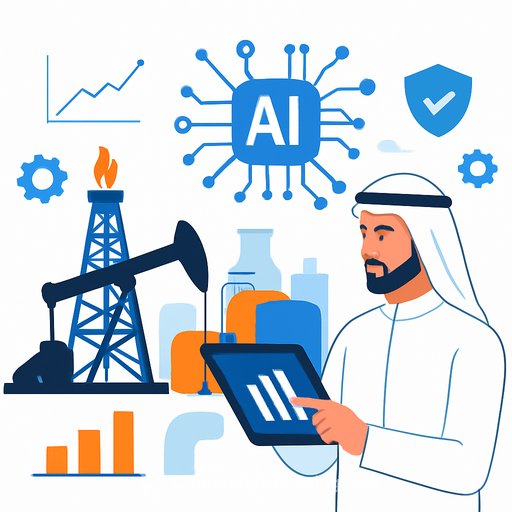Will a $5 Billion AI Power Deal Redefine Brookfield Asset Management's Investment Narrative?
Bloom Energy and Brookfield Asset Management have announced a US$5 billion partnership to deploy fuel cell systems for AI-focused data centers, starting with a first site in Europe and plans to scale globally. For management teams, this is less about headlines and more about control: control over uptime, build timelines, and emissions accounting as AI demand pushes energy needs to new highs.
The move signals Brookfield's first sizable step into a dedicated AI infrastructure strategy. It blends onsite generation with long-term capital-a practical combination for hyperscalers and enterprises that need guaranteed capacity without waiting on congested grids.
What the partnership actually does
The core of the deal is onsite fuel cell generation-modular units installed at or near AI "factories" (high-density data centers). This approach reduces reliance on grid interconnections that can face multi-year delays and uncertain upgrade costs.
Fuel cells can run on natural gas today and hydrogen or biogas as supply matures, enabling a staged path to lower emissions. For operators, that means faster capacity additions, firm power delivery, and a clearer roadmap for 24/7 clean energy goals.
Why this matters for your AI roadmap
- Speed to capacity: Onsite generation can compress timelines versus waiting for new grid connections, keeping AI buildouts on schedule.
- Reliability: Dedicated generation alongside the facility reduces exposure to grid outages and curtailments.
- Cost visibility: Long-term energy service agreements can stabilize unit economics for training and inference workloads.
- Emissions control: A pathway from natural gas to hydrogen/biogas supports progressive decarbonization and 24/7 matching targets.
- Siting flexibility: Sites can be chosen for talent and network proximity, not just for favorable interconnect queues.
How this could reshape Brookfield's investment narrative
- From asset owner to AI enabler: Brookfield pairs infrastructure capital with energy project development to become a direct partner for AI capacity, not just a passive investor.
- Contracted cash flows: Multi-year, take-or-pay style structures with data center operators and hyperscalers can extend duration and improve visibility.
- Cross-portfolio synergies: Potential to link renewables, storage, and transmission assets with onsite generation into integrated offerings.
- Global replication: A European launch suggests a template that can be repeated in regions with grid constraints and strong AI demand.
Key risks and open questions
- Fuel supply and emissions: Natural gas-based operation requires rigorous methane leakage controls and credible plans for hydrogen or biogas transition.
- Technology roadmaps: Fuel cell efficiency, durability, and service costs must hold under high-utilization AI loads.
- Policy and incentives: Hydrogen and clean fuels policy will influence total cost and emissions outcomes, especially in Europe and the U.S.
- Counterparty concentration: Hyperscaler credit is strong, but concentration risk and renegotiation pressure are real in fast-moving AI cycles.
- Execution at scale: Coordinating EPC, interties, permitting, and fuel logistics across multiple geographies is non-trivial.
What executives should do now
- Run a dual-track capacity plan: Maintain grid-interconnect projects while assessing onsite options (fuel cells, microgrids, CHP) to hedge delays.
- Model full-stack TCO: Compare $/MW-year across grid + PPA + batteries versus onsite generation, including maintenance, fuel hedges, and downtime costs.
- Define your 24/7 target: Set site-level carbon requirements and ensure any onsite solution supports hourly accounting, not just annual offsets.
- Stress-test availability: Require availability guarantees aligned to AI training windows, with meaningful credits for misses.
- Negotiate flexible fuels: Bake in conversion rights for hydrogen/biogas, plus pass-through mechanics for incentives and carbon pricing.
- Balance sheet vs. service model: Decide whether to own assets or procure through energy service agreements to preserve capital for core AI investments.
- Standardize procurement: Build a repeatable RFP covering technology, fuel, emissions reporting, service SLAs, and end-of-term options.
Due diligence questions for potential partners
- What is the guaranteed heat rate, stack life, and replacement schedule under AI duty cycles?
- How will methane leakage and upstream emissions be measured and reported?
- What are the firm timelines from notice-to-proceed to commissioning across regions?
- What fuel-switch pathways (hydrogen blends to 100%) are contractually supported, and at what cost?
- How are fuel price risks and carbon costs shared over the term?
- What are the contingencies for grid outages, fuel disruptions, and regulatory shifts?
Metrics to track
- Interconnection queue duration in target regions versus onsite deployment timelines.
- Total cost per MW-year under multiple fuel price and utilization scenarios.
- Availability and incident rates tied to AI training schedules and peak demand windows.
- 24/7 clean energy score and audited emissions intensity, including upstream leakage.
- Capacity added per quarter relative to AI compute roadmaps.
Why fuel cells fit AI-scale requirements
AI workloads need dense, steady, and predictable electricity. Fuel cells offer modularity, low local criteria pollutants, and quiet operation, making them easier to permit near campuses than traditional turbines in many jurisdictions.
They also slot into a broader clean energy plan: pair with grid PPAs, batteries for short-duration events, and progressive hydrogen adoption to align cost, reliability, and emissions over time.
Context worth reading: For a view on data center electricity trends, see the International Energy Agency's analysis here. For fuel cell technology basics, Bloom Energy outlines its solid oxide platform here.
Implications for Brookfield stakeholders
If executed well, this strategy can deepen Brookfield's role with hyperscalers and AI builders, add durable contracted revenues, and create optionality across energy pathways. The flip side: delivery risk at scale and credibility on emissions accounting will decide whether this becomes a core growth engine or a niche offering.
For boards and executives, the takeaway is clear: treat energy as a first-class constraint in AI planning. The teams that secure firm, clean, and scalable supply earliest will move faster and spend less fixing bottlenecks later.
Next step for managers
If you're building AI capacity or overseeing data center strategy, upskill your team on the operational and procurement side of AI infrastructure. A practical place to start is role-based training that connects AI roadmaps with energy, reliability, and cost management here.
Your membership also unlocks:






